لأوضح شئ قبل ان ابدء
انا لا أدافع عن تلك النظريه انما اعرض وجهة نظر علميه مهمشة و القرأن الكريم لم يفصل في المسئله بنص قطعي في الامر
السؤال الآن :
ماذا لو أن الغرب نفسه وإلى اليوم - وبعيدا ًعن النظرة الدينية أو النصرانية من لاديني- :
فيهم مَن لا زال يقول بإمكانية العكس وكما كان متداولا ًطوال آلاف السنين الماضية ؟؟؟؟...
وذلك لأن الأمر نسبي في الرصد سواء من الأرض أو الشمس ؟؟؟..
وإن كنت تعجب من أنه لو العكس - أي الشمس هي التي تدور - :فإن هذا يعني سرعة كبيرة لها :
أقول :
اقرأ أصلا السرعات الموضوعة للشمس في الكون : بل وللمجرة في الكون : لتعرف أنك تتقبل أغرب منها !
بل وحتى علماء الفيزياء والفلك : بل واللادينيين والملاحدة والقائلين بالمجال الموحد في الكون أو الكائنات الفضائية إلخ :
ما زالوا يضعون من النظريات الغريبة عن حركة الكواكب والشمس والقمر والأرض وعن شكل الكون :
ما يصح رياضيا ًونظريا ًويتوافق (أيضا) مع مشاهداتنا اليومية وأرصادنا ؟!!!..
قبل ما نتكلم عن الايات التى تخص مسألة الدوران .... علينا توضيح بعض الأشياء من الناحية الفيزيائية
" السكون المطلق والحركة المطلقة " " what time does oxford arrive at this train "
لا
يمكننا القول فى ضوء الفيزياء الحديثة ان الجسم الفلانى يتحرك أو الجسم
الفلانى ساكن ..... لأن الحركة نسبية ....لما نقول ان الجسم بيتحرك لازم
يقول بيتحرك بالنسبة لأية ؟؟؟؟ .... ولما نقول ان الجسم ساكن لازم نحدد
ساكن بالنسبة لأية ؟؟؟ ..... فلا يوجد فى الكون حركة مطلقة أو سكون مطلق .... بل لدينا حركة نسبية وسكون نسبى ... مثال بسيط على هذا الكلام :-*
واحد ( أ ) راكب قطر راكب جمبه واحد كمان ( ب ) ... وفى واحد ( ج ) واقف على الأرض برة القطر .... فهل ( أ ) ساكن أم متحرك ؟؟؟
لا يمكننا القول أن ( أ ) ساكن أو متحرك .... بل يمكن ان نقول أن ( أ ) ساكن بالنسبة لـ ( ب ) لأن ( ب ) يتحرك مع ( أ ) بنفس سرعته فهو ساكن بالنسبة له .... وفى نفس الوقت ( أ ) متحرك بالنسبة لـ ( ج ) الواقف على الأرض*
Motion
and Rest are relative terms, for example, the person, sitting inside
the moving train, is at rest to the person sitting next to him but he is
in motion with respect to the person outside the moving train.
http://physics.tutorvista.com/motion.html
اذا الحديث عن حركة جسم أو سكون جسم لا يمكن ان يتم الا بمقارنة هذا الجسم بجسم أخر*
in other words, there is no such thing as absolute rest. All motion or rest is only in relation to other observed objects
http://aether.lbl.gov/www/classes/p139/exp/introduction.html
فالحركة
نسبية وعندما يتم وصف حركة اى جسم فأنها تعتمد على مكان الشخص الذى يصف
والنقطة التى من خلالها وصف هذة الحركة reference point - frame - point of
view ... وبدون تحديد هذة النقطة فوصف الحركة لا معنى له ( 1 )
Motion is relative, and the motion that one observes depends on one's frame or*
reference, or point of view
فعندما تمر سيارة مثلا بسرعة 50 كيلو / ساعة بجانب طريق فلا يمكننا وصف حركة السيارة بمعزل عن نقطة المرجع التى نشاهد من خلالها هذة الحركة ..... فالنسبة للطريق السيارة تسير بسرعة 50 كيلو / ساعة ... وبالنسبة للسيارة فالطريق هو الذى يسير بسرعة 50 كيلو / ساعة (2) ... ومن الناحية الفيزيائية الوصفين صحيحين 100 %
... وبالتالى قبل ان نصف حركة جسم علينا أولا تحديد ما هى نقطة المرجع
التى تم وصف الحركة من خلالها ... لانه اذا تم تغيير هذة النقطة سيتغير وصف
هذا الحركة بالنسبة للمُشاهد*
it's
just as true to say that the road is moving at 50 km/h relative to your
car as it is to say that your car is moving at 50 km/h relative to the
road
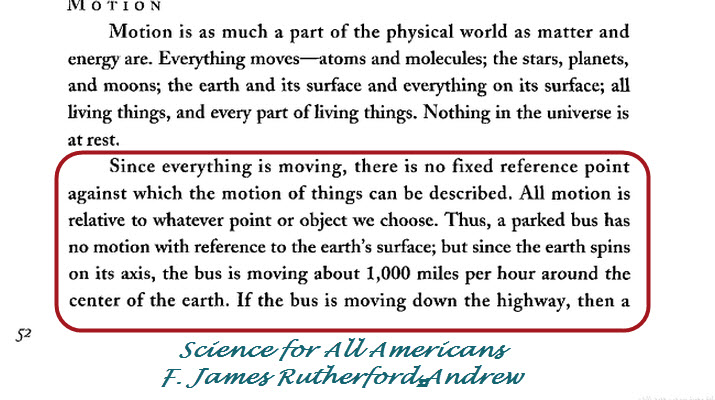

ويتحدث هنا الكاتب بعد شرح نسبية الحركة وحول عدم نقطة ثابتة فى الكون كله لأن الكون كله فى حالة حركة عن اوتوبيس واقف على الأرض ... فهذا الاتوبيس " ساكن " بالنسبة لسطح الأرض ... وفى نفس الوقت يتحرك مع حركة الأرض حول محورها ( 3 )
http://wiki.answers.com/Q/All_motion_is_relative
3-راجع ايضا اينشتين والنسبية - دكتور مصطفى محمود
" الأرض "
من الناحية الفيزيائية الأرض تدور حول محورها وتدور هى والشمس حول مركز الكتلة المشترك بينهم -barycenter - ومركز الكتلة هى النقطة التى تتمركز فيها كتلة الجسم ويمكن استبدال الجسم بهذة النقطة


فلو
دار جسمين ثقيلين حول بعضهم البعض فى مدار دائرى سيكون دورانهم حول مركز
الكتلة المشترك بينهم ( ومركز الكتلة المشترك سيكون أقرب بالطبع للجسم
الأثقل ويقترب منه كلما كان هذا الجسم أثقل من الجسم الأخر )

.

المشهور والمعروف ان الأرض تدور حول الشمس وان القمر يدور حول الأرض ... فالحقيقة هذا القول ليس بدقيق
وهو مجرد تبسيط لحقيقة اخرى وهى ان الأرض والشمس يدوران مركز الكتلة الخاص
بهم .... والأرض والقمر يدوران حول مركز الكتلة خاص بهم .... فضلا عن ان
هذا القول ليس على إطلاقه بهذة السهولة ... لان وصف دوران جسم حول جسم لابد ان يُقيد بالمرجع أو مكان الرؤية كما ذكرنا فى المداخلة السابقة ( REFERENCE POINT )
... فوصف دوران الأرض حول الشمس يأتى فى اطار ان المشاهد يراهما من نجم
أخر خارج نطاق المجموعة الشمسية أو من اى مكان اخر بخلاف الأرض ... اما لو
أتخذنا الأرض كنقطة مرجعية فالوصف الفيزيائى الصحيح سيكون ان الشمس هى التى
تدور حول الأرض ... والقول المشهور ان الأرض هى التى تدور حول الشمس ناتج
من جعل المرجعية من نجم اخر خارج المجموعة الشمسية ولأن الشمس هى الجسم
الكبير ومركز الكتلة بينها و بين الارض يقع داخلها لانها أكبر من الأرض
بكثير جداااااااا ولكن يظل مركز الكتلة غير مركز الشمس وبالتالى فالشمس
ايضا تدور حول هذا المركز ولكن بسرعة لا تُقارن بالطبع من سرعة دوران الأرض
حول هذا المركز وهنا ستكون الحسابات سهلة ... لان جعل الأرض مركز والشمس
هى التدور حولها سيجعل الحسابات غاية فى التعقيد ولكنه من الناحية
الفيزيائية لا شئ فيه ... ربما يكون الكلام صادم بعض الشئ ولذلك سنؤكد هذا
بأكثر من مرجع
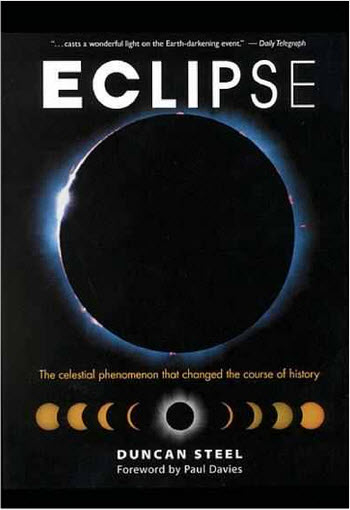
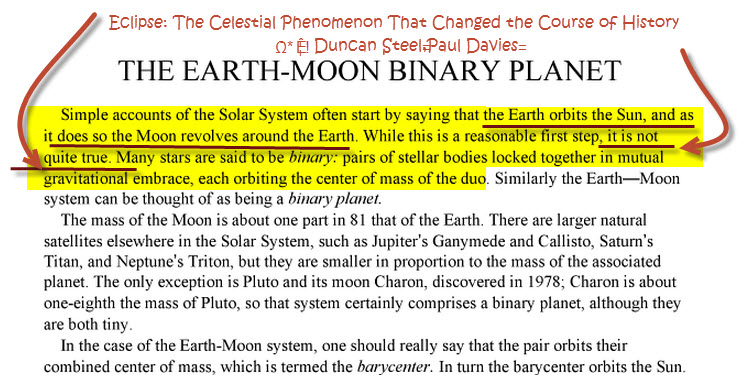
القول بان القمر يدور حول الأرض قول تقريبى ... الحقيقة ان كلامها يدور حول مركزى كتلتيهما ( BARY CENTER )

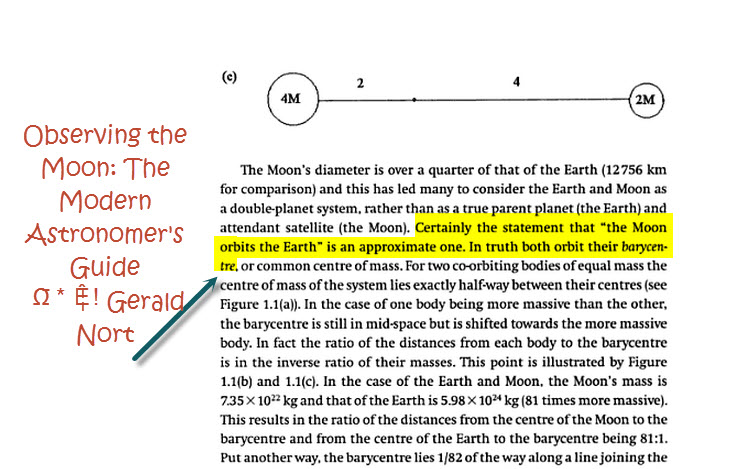
ايضا

المألوف بالنسبة لنا ان الأرض تدور حول الشمس ولكن لنكون أكثر دقة فلنقول ان الحركة حول مركز الكتلة

مركز كتلة المجموعة الشمسية يقع داخل الشمس ولكنه ليس مركز الشمس بسبب كتلة الأجسام التى تدور حولها
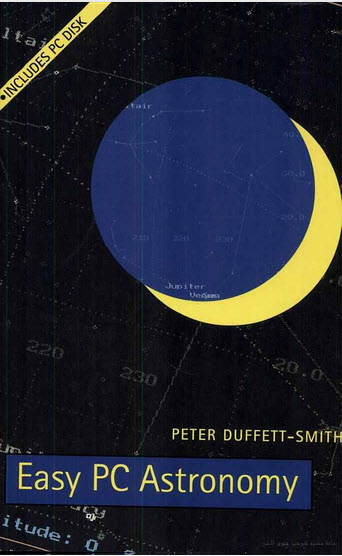

حركة الشمس حول مركز الكتلة يتوقف على باقى الكواكب ..... ومركز الكتلة بين
الشمس والمشترى يقع خارج الشمس لان المشترى كبير جدا بالمقارنة بالأرض


صورة لمركز الكتلة بين الشمس وكوكب المشترى والذى يقع خارج الشمس

http://spaceplace.nasa.gov/barycenter/
الشمس والأرض فى الحقيقة يدوران حول بعضهما البعض حول مركز مشترك يُسمى - BARYCENTER
The Sun and the Earth actually orbit around each other. They swoop around a common center called the barycenter.
http://christophercrockett.com/astrowow/barycenter/
فى حالة الشمس والأرض فكلامها يدوران حول مركز الكتلة ( مثل مركز الجاذبية ) والذى يسمى - BARYCENTER -
In the case of the Earth and the Sun, both bodies orbit around the very center of the mass (similar to center of gravity) between them. This point is called the "barycenter."
http://spaceplace.nasa.gov/barycenter/
القمر والأرض - نفس الكلام
The moon does not orbit the center of the earth, rather, they both
revolve around the center of their masses called the barycenter
http://library.thinkquest.org/29033/begin/earthsunmoon.htm
(The Earth and Moon orbit about their barycentre (common centre of mass
http://en.wikipedia.org/wiki/Orbit_of_the_Moon
الأرض وكل كواكب المجموعة الشمسية يدوران حول مركز الكتلة لا الشمس
The Earth and all the planets in the Solar System orbit the barycentre and not the Sun
http://www.solarchords.com/solar-chord-science/3/astrophysicists-earth-orbit--sun-or-barycentre/57209/
The sun and other planets each have their own gravity well which interact and pull on one another. The result of this, is that everything in an orbital system (like our solar system) orbit the center of mass of the system. This ‘center of mass’ is called the barycenter.
http://zidbits.com/2011/09/the-earth-doesnt-actually-orbit-the-sun/
This means that the sun is also moved a little bit by the earth, but the
sun has much greater mass, so it seems that the sun is fixed while the
earth is revolving around it.
If the earth and sun had equal masses then they would revolve around
each other with the center of revolution half way in between.
If you think of the center of mass of the solar system, the Sun is very
close to the center of mass, while the Earth orbits at a much greater
distance. So if you were an alien viewing our solar system from some
other star, it would look to you like the Earth is rotating about the
sun. The Sun orbits about the center of mass of the solar system too, but
if I remember right, the center of mass of the solar system lies within
the sun, so the sun doesn't have a very big orbit: it just wobbles a
bit with the motion of the other planets
http://scienceline.ucsb.edu/getkey.php?key=2921
Although it is convienent to think of the Sun as the stationary anchor of our solar system, it actually moves as the
planets tug on it, causing it to orbit the solar system's barycenter
http://www.orbitsimulator.com/gravity/articles/ssbarycenter.html
The Sun revolves around a point in our solar system called the barycenter, which is the center of mass of the solar system
http://www.wisegeek.com/what-does-the-sun-revolve-around.htm
Does the Sun orbit the Earth as well as the Earth orbiting the Sun?
Is it true that Sun also revolves around the Earth? If yes, apart from
convenience, is there another reason why we use the Solar-centered
coordinate system ?
Technically, what is going on is that the Earth, Sun and all the planets
are orbiting around the center of mass of the solar system. This is
actually how planets orbiting other stars are often detected, by
searching for the motion of the stars they orbit that is caused by the
fact that the star is orbiting the center of mass of the system, causing
it to wobble on the sky.
The center of mass of our solar system very close to the Sun itself, but not exactly at the Sun's center
(it is actually a little bit outside the radius of the Sun). However,
since almost all of the mass within the solar system is contained in the
Sun, its motion is only a slight wobble in comparison to the motion of the planets. Therefore, assuming that the Sun is stationary and the planets revolve around its center is a good enough approximation for most purposes.
http://curious.astro.cornell.edu/question.php?number=461
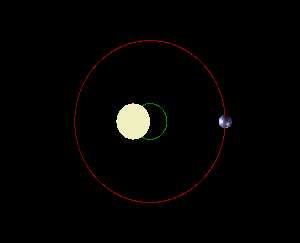

(Two stars with very different masses orbiting around their barycenter)
والان فالشمس تدور والارض تدور لا حول مركز الشمس وانما حول مركز الكتلة
... وهنا نسأل من فيهما يدور حول الأخر .؟؟؟ .... تتوقف أجابة هذا السؤال
على مكان المشاهد والذى سيتخذه مرجع ( REFERENCE ) ويبنى وصف الحركة على
أساسه .... فاذا اتخذنا الأرض كمرجع فالشمس هى التى تدور حولها ويمكن العمل
على هذا الأساس ولكن ستكون الحسابات معقدة كما رأينا .... ولو اتخذنا
الشمس أو نجم خارج المجموعة الشمسية كمرجع سنرى ان الأرض هى التى تدور حول
الشمس ... فكلا المرجعين صحيح من الناحية الفيزئائية
ولكن لبطئ دوران الشمس حول مركز الكتلة بالنسبة لحركة الأرض ولسهولة
الحسابات فالعمل يتم على اساس اتخاذ الشمس كمرجع وان الأرض تدور حولها
عندما نقول ان الأرض تدور حول الشمس لا بخلاف ذلك فنحن نعطى تمييز لهذا الوصف لان كلا الوصفين صحيح ...
والأمر يعتمد على المرجع الذى تم اختياره لو كان الوصف بالنسبة للشمس
فالأرض هى التى تدور حولها ... ولو اتخذنا ألأرض كمرجع فالشمس هى التى تدور
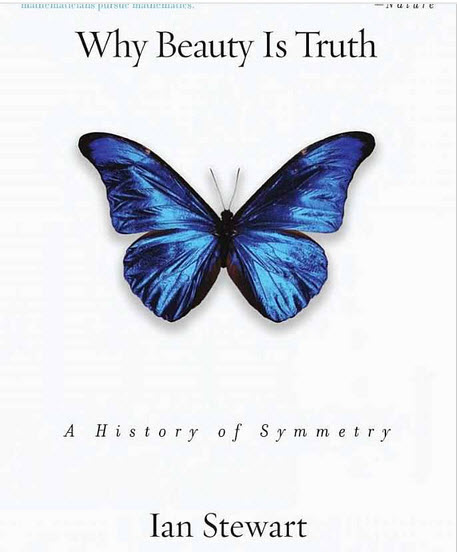

يمكن اختيار الأرض كمرجع ولكن ستكون الحسابات غاية فى التعقيد
You are right that you are free to choose the "center" of your universe wherever you like.
However, the explanation you will have to come with for the motions of
the stars and planets may become so horribly complicated that you may
wish you had chosen a more natural place to be your center. So basically, we say the Earth goes around the Sun because it's much, much easier than the other way around.
http://scienceline.ucsb.edu/getkey.php?key=2921
If the sun's path is observed from the Earth's reference frame, it appears to move around the Earth
http://hyperphysics.phy-astr.gsu.edu/hbase/eclip.html
لو اتخذنا الأرض كمرجع فالشمس تدور حول الأرض ( صحيح 100 % )
It is absolutely true that in an Earth-centered reference frame the sun rotates about the Earth
http://scienceline.ucsb.edu/getkey.php?key=2921
" الشمس "
اما حركات الشمس المعروفة حتى الان فهناك حركة :-
حول محورها
The Sun, like most other astronomical objects (planets, asteroids, galaxies, etc.), rotates on its axis
http://www.windows2universe.org/sun/Solar_interior/Sun_layers/differential_rotation.html
http://imagine.gsfc.nasa.gov/docs/ask_astro/answers/970108a.html
حول مركز الكتلة
The
Sun revolves around a point in our solar system called the barycenter,
which is the center of mass of the solar system, as well as revolving
around the center ...
http://www.wisegeek.com/what-does-the-sun-revolve-around.htm
حول مركز المجرة " وهى باقى المجموعة الشمسية "
The Sun and the entire solar system orbits around the center of the Milky Way galaxy.
Read more: http://www.universetoday.com/60192/does-the-sun-rotate/#ixzz2UllhX9qc
تسير فى اتجاة معين نجو النجم فيجا ( solar apex )
the Local System of stars that includes our Sun is moving in the general
direction of the star Vega in the constellation Lyra. This apparent
direction is termed the Solar Apex or Apex of the Sun's Way
http://www.daviddarling.info/encyclopedia/S/solar_apex.html
http://www.astrologysoftware.com/resources/aphysical/gsmotion.asp?orig=%20?orig=RPP
http://astrologysidereal.com/LunarMonths2005/lunarmonth.05.01.10.html
http://en.wikipedia.org/wiki/Solar_System
ثانياً: حقيقة حركة الشمس:
http://physics.tutorvista.com/motion.html
reference, or point of view
it's just as true to say that the road is moving at 50 km/h relative to your car as it is to say that your car is moving at 50 km/h relative to the road
" الأرض "
من الناحية الفيزيائية الأرض تدور حول محورها وتدور هى والشمس حول مركز الكتلة المشترك بينهم -barycenter - ومركز الكتلة هى النقطة التى تتمركز فيها كتلة الجسم ويمكن استبدال الجسم بهذة النقطة


فلو
دار جسمين ثقيلين حول بعضهم البعض فى مدار دائرى سيكون دورانهم حول مركز
الكتلة المشترك بينهم ( ومركز الكتلة المشترك سيكون أقرب بالطبع للجسم
الأثقل ويقترب منه كلما كان هذا الجسم أثقل من الجسم الأخر )
| . |
المشهور والمعروف ان الأرض تدور حول الشمس وان القمر يدور حول الأرض ... فالحقيقة هذا القول ليس بدقيق
وهو مجرد تبسيط لحقيقة اخرى وهى ان الأرض والشمس يدوران مركز الكتلة الخاص
بهم .... والأرض والقمر يدوران حول مركز الكتلة خاص بهم .... فضلا عن ان
هذا القول ليس على إطلاقه بهذة السهولة ... لان وصف دوران جسم حول جسم لابد ان يُقيد بالمرجع أو مكان الرؤية كما ذكرنا فى المداخلة السابقة ( REFERENCE POINT )
... فوصف دوران الأرض حول الشمس يأتى فى اطار ان المشاهد يراهما من نجم
أخر خارج نطاق المجموعة الشمسية أو من اى مكان اخر بخلاف الأرض ... اما لو
أتخذنا الأرض كنقطة مرجعية فالوصف الفيزيائى الصحيح سيكون ان الشمس هى التى
تدور حول الأرض ... والقول المشهور ان الأرض هى التى تدور حول الشمس ناتج
من جعل المرجعية من نجم اخر خارج المجموعة الشمسية ولأن الشمس هى الجسم
الكبير ومركز الكتلة بينها و بين الارض يقع داخلها لانها أكبر من الأرض
بكثير جداااااااا ولكن يظل مركز الكتلة غير مركز الشمس وبالتالى فالشمس
ايضا تدور حول هذا المركز ولكن بسرعة لا تُقارن بالطبع من سرعة دوران الأرض
حول هذا المركز وهنا ستكون الحسابات سهلة ... لان جعل الأرض مركز والشمس
هى التدور حولها سيجعل الحسابات غاية فى التعقيد ولكنه من الناحية
الفيزيائية لا شئ فيه ... ربما يكون الكلام صادم بعض الشئ ولذلك سنؤكد هذا
بأكثر من مرجع
القول بان القمر يدور حول الأرض قول تقريبى ... الحقيقة ان كلامها يدور حول مركزى كتلتيهما ( BARY CENTER )
ايضا
المألوف بالنسبة لنا ان الأرض تدور حول الشمس ولكن لنكون أكثر دقة فلنقول ان الحركة حول مركز الكتلة
مركز كتلة المجموعة الشمسية يقع داخل الشمس ولكنه ليس مركز الشمس بسبب كتلة الأجسام التى تدور حولها
حركة الشمس حول مركز الكتلة يتوقف على باقى الكواكب ..... ومركز الكتلة بين الشمس والمشترى يقع خارج الشمس لان المشترى كبير جدا بالمقارنة بالأرض
صورة لمركز الكتلة بين الشمس وكوكب المشترى والذى يقع خارج الشمس

http://spaceplace.nasa.gov/barycenter/
الشمس والأرض فى الحقيقة يدوران حول بعضهما البعض حول مركز مشترك يُسمى - BARYCENTER
The Sun and the Earth actually orbit around each other. They swoop around a common center called the barycenter.
فى حالة الشمس والأرض فكلامها يدوران حول مركز الكتلة ( مثل مركز الجاذبية ) والذى يسمى - BARYCENTER -
In the case of the Earth and the Sun, both bodies orbit around the very center of the mass (similar to center of gravity) between them. This point is called the "barycenter."
http://spaceplace.nasa.gov/barycenter/
القمر والأرض - نفس الكلام
The moon does not orbit the center of the earth, rather, they both revolve around the center of their masses called the barycenter
http://library.thinkquest.org/29033/begin/earthsunmoon.htm
(The Earth and Moon orbit about their barycentre (common centre of mass
http://en.wikipedia.org/wiki/Orbit_of_the_Moon
الأرض وكل كواكب المجموعة الشمسية يدوران حول مركز الكتلة لا الشمس
The Earth and all the planets in the Solar System orbit the barycentre and not the Sun
http://www.solarchords.com/solar-chord-science/3/astrophysicists-earth-orbit--sun-or-barycentre/57209/
The sun and other planets each have their own gravity well which interact and pull on one another. The result of this, is that everything in an orbital system (like our solar system) orbit the center of mass of the system. This ‘center of mass’ is called the barycenter.
http://zidbits.com/2011/09/the-earth-doesnt-actually-orbit-the-sun/
This means that the sun is also moved a little bit by the earth, but the sun has much greater mass, so it seems that the sun is fixed while the earth is revolving around it. If the earth and sun had equal masses then they would revolve around each other with the center of revolution half way in between.
If you think of the center of mass of the solar system, the Sun is very close to the center of mass, while the Earth orbits at a much greater distance. So if you were an alien viewing our solar system from some other star, it would look to you like the Earth is rotating about the sun. The Sun orbits about the center of mass of the solar system too, but if I remember right, the center of mass of the solar system lies within the sun, so the sun doesn't have a very big orbit: it just wobbles a bit with the motion of the other planets
http://scienceline.ucsb.edu/getkey.php?key=2921
Although it is convienent to think of the Sun as the stationary anchor of our solar system, it actually moves as the
planets tug on it, causing it to orbit the solar system's barycenter
http://www.orbitsimulator.com/gravity/articles/ssbarycenter.html
The Sun revolves around a point in our solar system called the barycenter, which is the center of mass of the solar system
http://www.wisegeek.com/what-does-the-sun-revolve-around.htm
Does the Sun orbit the Earth as well as the Earth orbiting the Sun?
Is it true that Sun also revolves around the Earth? If yes, apart from convenience, is there another reason why we use the Solar-centered coordinate system ?
Technically, what is going on is that the Earth, Sun and all the planets are orbiting around the center of mass of the solar system. This is actually how planets orbiting other stars are often detected, by searching for the motion of the stars they orbit that is caused by the fact that the star is orbiting the center of mass of the system, causing it to wobble on the sky.
The center of mass of our solar system very close to the Sun itself, but not exactly at the Sun's center (it is actually a little bit outside the radius of the Sun). However, since almost all of the mass within the solar system is contained in the Sun, its motion is only a slight wobble in comparison to the motion of the planets. Therefore, assuming that the Sun is stationary and the planets revolve around its center is a good enough approximation for most purposes.
You are right that you are free to choose the "center" of your universe wherever you like. However, the explanation you will have to come with for the motions of the stars and planets may become so horribly complicated that you may wish you had chosen a more natural place to be your center. So basically, we say the Earth goes around the Sun because it's much, much easier than the other way around.
http://scienceline.ucsb.edu/getkey.php?key=2921
http://hyperphysics.phy-astr.gsu.edu/hbase/eclip.html
http://scienceline.ucsb.edu/getkey.php?key=2921
" الشمس "
اما حركات الشمس المعروفة حتى الان فهناك حركة :-
حول محورها
http://www.windows2universe.org/sun/Solar_interior/Sun_layers/differential_rotation.html
http://imagine.gsfc.nasa.gov/docs/ask_astro/answers/970108a.html
http://www.wisegeek.com/what-does-the-sun-revolve-around.htm
The Sun and the entire solar system orbits around the center of the Milky Way galaxy.
Read more: http://www.universetoday.com/60192/does-the-sun-rotate/#ixzz2UllhX9qc
the Local System of stars that includes our Sun is moving in the general direction of the star Vega in the constellation Lyra. This apparent direction is termed the Solar Apex or Apex of the Sun's Way
http://www.daviddarling.info/encyclopedia/S/solar_apex.html
http://www.astrologysoftware.com/resources/aphysical/gsmotion.asp?orig=%20?orig=RPP
http://astrologysidereal.com/LunarMonths2005/lunarmonth.05.01.10.html
http://en.wikipedia.org/wiki/Solar_System

كلام جميل ومفيد وعلمي.. أتمنى أن يلقى المتابعة من الجميع
ردحذفالموقع جميل جدا وممتاز ولكن هذا الموضوع لا اعرفنن طرحه هنا فهو بعيد عن العلم والاثبات فالرائي خارج المجموعة الشمسية سيرى ان الارض هي التي تدور او حتى الرائي في الفضاء بين الكواكب
ردحذفأخي هل هناك شيء قطعي حتى الآن؟... هل هناك من رأى هذه الرؤية من بعيد و صورها؟ -رغم تقدم التكنلوجيا - و معلوم أن هناك تلسكوبات قوية مثل "هابل" لماذا لم يسجل و لو مقطع لدوران الأرض حول نفسها؟ لماذا لا نقول أن الفلك بما فيه هو الذي يدور حول الأرض؟ أليس هذا ممكنا؟
حذفحتى الآن إن هي إلا نظريات علمية و ليست بحقائق علمية أخي الكريم
روعة، كلام منطقي علمي مؤصل، بارك الله فيك
ردحذفhttp://www.eltwhed.com/vb/showthread.php?63349-%CF%E6%D1%C7%E4-
ردحذف